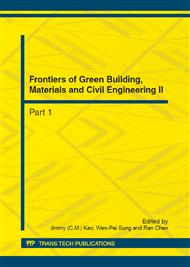p.121
p.125
p.129
p.133
p.137
p.142
p.146
p.152
p.157
Effect of Indoor Thermal Environment on Building Energy Consumption
Abstract:
This study reviews some published literatures to seek the relationship between the parameters of indoor environments and the energy consumption. The indoor thermal environments are categorized and defined as different indices and variables. The building energy can be determined by indoor air temperature, occupant-area ratio and working days. Several parameters of indoor thermal environments such as air velocity, neutral temperature, predicted mean vote, indoor air quality, and set point temperature, are summarized for their influence on the energy consumption. It can be concluded that the increased local air velocity, enhanced neutral temperature, and enlarged set point temperature may be beneficial to reduce the energy consumption.
Info:
Periodical:
Pages:
137-141
Citation:
Online since:
August 2012
Authors:
Price:
Сopyright:
© 2012 Trans Tech Publications Ltd. All Rights Reserved
Share:
Citation:


